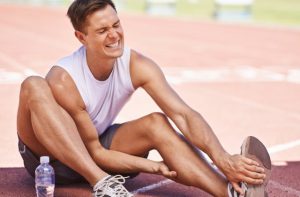Know What Doctors Advice About Muscle Cramps: Causes, Prevention, And Treatment

A lot of us have probably experienced a charley horse, known also as a muscle spasm or cramp. While it can occur in any muscle in the body, the most common would be in the leg, particularly the calf or hamstring. Aside from the pain, you will also experience the hardening of the muscle. Cramps normally occur after an intense workout, especially during warm weather, but there are other reasons why it happens.
Causes of muscle cramps
Muscle cramps can be brought on by overuse of the muscle, fatigue, dehydration, electrolyte depletion, or simply holding a position for a long period. Studies have shown that muscle cramps affect women more often than men, usually disappear after a few minutes, and are more common as you get older. Although most are harmless (but still painful), some may be related to an underlying medical condition:
Mineral depletion. Too little calcium, potassium, or magnesium in your diet can cause muscle cramps. Also know that diuretics – medications prescribed for high blood pressure – also can cause depletion of these minerals.
Deficient blood supply. Narrowing of the arteries that deliver blood to your legs can produce cramps while exercising. But they usually go away as soon as you stop exercising.
Nerve compression. Sometimes, cramp-like pain in your legs can be caused by compression of nerves in your spine. It usually happens when you are walking, and the pain gets worse the longer you walk. Walking in a slightly flexed position…like pushing a shopping cart ahead of you may delay the onset of the symptoms.
How to get rid of muscle cramps
Know that you know some causes of muscle cramps, let us look at how to get relief from them.
Contracting a muscle group opposite the one cramping. Dr. Mathew Matava, chief of sports medicine at Washington University Orthopedics in St. Louis, said, “Try contracting the muscle group opposite the one that is cramping; this utilizes the body’s normal reflex that ‘turns off’ a muscle that has the opposite function.” so, contracting the muscles at the front of the thigh, for example, will help relieve hamstring cramps. Also, massage and stretch a muscle that is cramping.
Apply ice or heat to soothe the muscle. Ice will help address inflammation which will ease discomfort, and heat, even from a warm towel, will boost blood flow and alleviate the pain.
Check your meds. Medicines for asthma, high blood pressure, or high cholesterol, can have muscle cramps as a side effect. Talk to your doctor about it if you feel the cramping is due to your meds. Your doctor may recommend a lower dose or a different medicine which does not cause cramping.
Steps to help prevent muscle cramps
When you age, muscle mass and strength are affected. Fatigue and overexertion are key muscle cramp triggers. Don’t overdo your exercises, what you could do when you were younger will definitely change, so work out moderately as you get older. Also remember to stretch before and after an exercise, this will increase blood flow and lengthen muscle fibers, which will make them less likely to tighten involuntarily.
Avoid dehydration, drink up! Drink plenty of liquids, fluids help muscles relax and contract, and keep muscle cells less irritable by being hydrated. Especially during warm weather where you sweat more, and your body fluids deplete faster.
Load up on minerals. Particularly with fruits and veggies rich in electrolyte minerals like sodium, potassium, calcium, and magnesium. These help regulate muscle function. Dr. Matava says, “ Most people can get all the electrolytes they need in a healthy diet.” Recommended are bananas, black beans, and leafy greens.
It is also important to know what factors increase your risk of muscle cramps. Basically, dehydration, age, and medical conditions affect the frequency of muscle cramps. Women also get cramps during pregnancy. Knowing these, you can prevent the chances of cramping, know its causes, and treat them when they occur.



